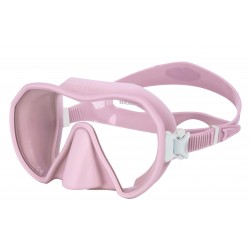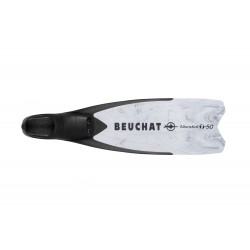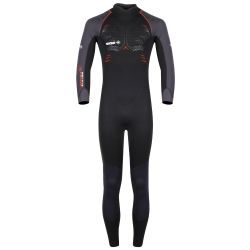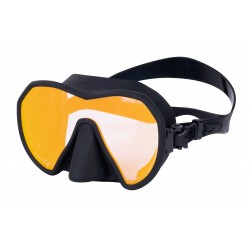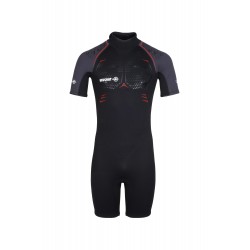How should you maintain your Beuchat diving equipment
How can you best maintain your underwater diving equipment and keep it in top condition, dive after dive? Beuchat has some tips.
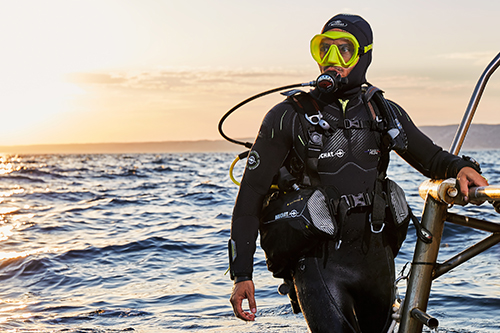
Maintaining your diving suit
The flexibility and water tightness of your underwater diving suit are essential for your comfort and safety underwater. Your suit protects you from the cold and ultimately from any adverse encounters with underwater rocks, plants and animals. After each dive, you should rinse your suit in fresh water, and then hang it to dry on a suitable support or hanger to avoid it losing shape. Note: Never let underwater diving apparel dry in direct sunlight, as this may damage the neoprene!
The diving suit must be cleaned regularly and always before being put away for a period when it will not be used in the sea. Underwater diving apparel can be cleaned with an appropriate detergent in order to eliminate the micro-organisms found in the marine environment. The best solution is to wash the suit in a basin or a bathtub with a little detergent and with cold or just tepid water, before rinsing it thoroughly with fresh water and then drying. Always aim to store your suit unfolded.
Certain suits can be machine washed but we do not recommend this; in all cases avoid spin drying!
Zips can be cleaned by using a toothbrush, and oiled by means of an appropriate lubricant. Any snags in the suit can be repaired with a touch of neoprene repair glue. Leave your diving suit to dry away from direct sunlight and away fromany heat source. When perfectly dry, store your diving suit on a hanger rather than folded, in order to keep it in shape and protect the structure of the neoprene.
These tips also apply to diving gloves, hoods, boots and vests, as well as masks, snorkels and fins.
Maintaining your diving regulator
The regulator enables you to breathe the air in the bottle under the water. It is therefore vital for your safety to maintain it carefully, and to have its condition checked regularly by a Beuchat approved professional.
To protect your diving regulator on a daily basis, after each dive replace the dustcap on the yoke, or the threaded cap of the DIN connection, depending on the model. Back on land after your day of diving, soak the regulator in fresh water with the rest of your equipment, taking care not to press the purge button while the regulator is submerged. At regular intervals soak your regulator for a longer period in a basin of fresh water, then rinse it under a jet of fresh water and dry it away from sunlight.
Between dive periods the regulator should be stored in a dry, well-ventilated location, away from direct sunlight and any heat sources, and protected from shocks and vibrations. You can store your diving regulator by hanging it up by the yoke or the DIN connector, or flat. Remove the cap to allow air to circulate in the filter.
Finally, to ensure your comfort and safety, the diving regulator must be tested at least once a year by a professional. Every two years at least, your diving regulator must be entirely disassembled, the parts cleaned and the mechanism adjusted. The performance of the regulator must also be tested. This operation requires special skills and must be entrusted to the professionals of the Beuchat network.
Maintaining your stabilizer jacket or stab
The stabilizer jacket, or stab, acts as a buoy on the surface, provides a support for the bottles and helps to obtain neutral buoyancy when diving. Your stab is thus essential for your comfort and safety so it is very important to maintain it correctly between two dives.
Before each dive, check the different attachments on the stabilizer jacket: the strap that holds the bottle in place and the buckles that close the stab. Also test the Direct System connections, the inflate/deflate buttons and the quick purge buttons.
After the dive, fully inflate the stab with the air remaining in the bottle before detaching it and disconnecting the direct system. Then empty the water contained in the stabilizer jacket by using the quick purge. Rinse the stab in fresh water, and leave it to dry on a suitable hanger away from direct sunlight and any source of heat.
Between two dive periods, first ensure the stabilizer jacket is completely dry then store it in a cool dry location, protected from direct sunlight and any heat source. Inflate the internal envelope slightly to avoid it becoming stuck to the vest. Another solution for long term storage consists in unscrewing the quick purges to allow air to circulate in the stab.
Finally, don’t forget to have the inflator checked once a year.


 Snorkeling
Snorkeling
 Beuchat Team
Beuchat Team
 Scuba diving
Scuba diving
 Free Diving
Free Diving
 Snorkeling
Snorkeling
 Beuchat Team Spearfishing
Beuchat Team Spearfishing
